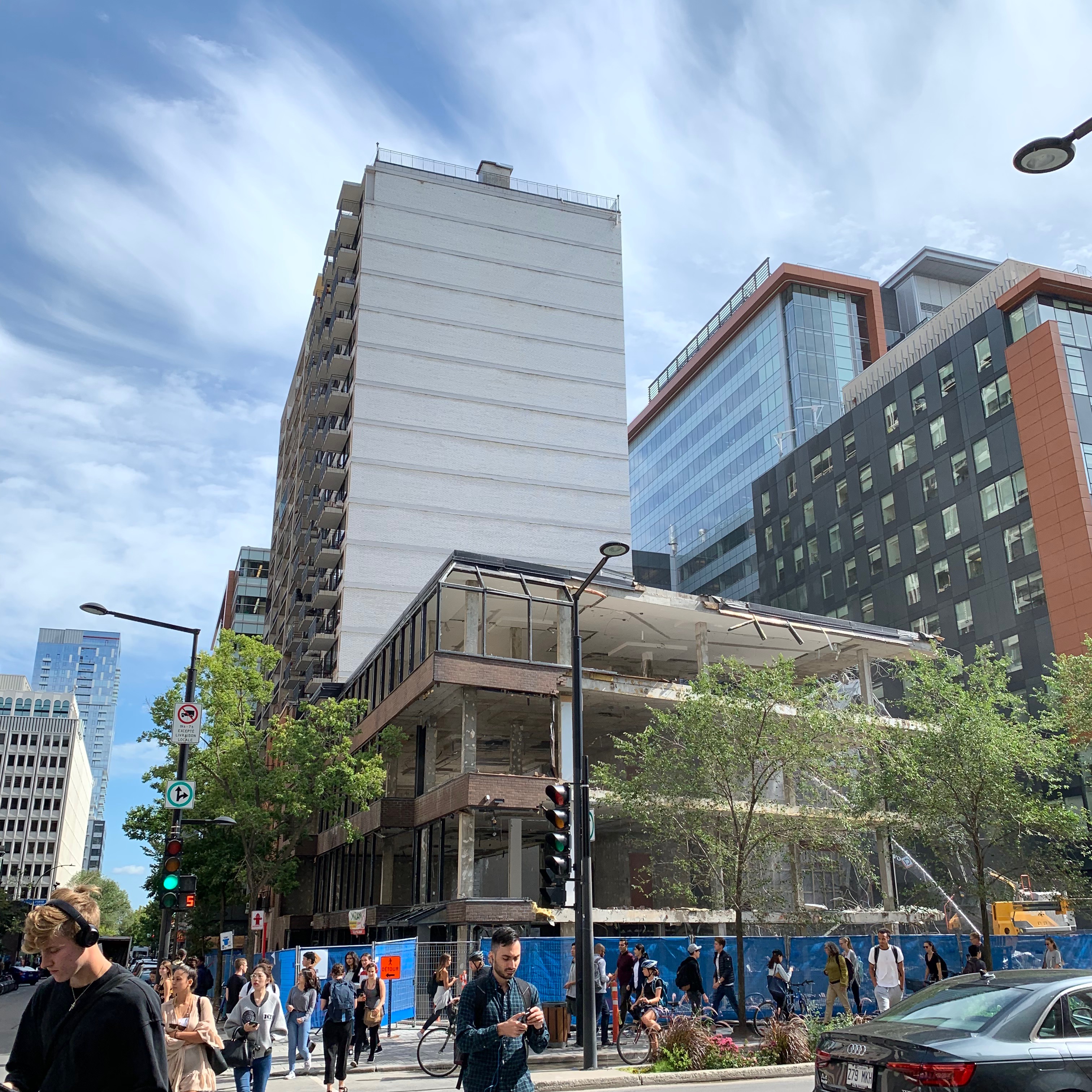Hopes went down for the Concordia Student Union (CSU) when learning a few weeks back that the last potential building to accommodate student housing was being replaced by a condo project.
The building, located on the corner of Mackay St., was once home to Mizan Gourmet, a Mediterranean supermarket, and Copy Concordia, among other shops and restaurants. It will be demolished any day now.
“We got an email that the building was bought, that it’s going to be torn down and that it’s going to be turned into a condo building,” said CSU President Chris Kalafatidis. “The reason why we’re so offended by this building is that once it goes up it’s over. It can never be undone.”
The building is said to be 20-storey high.
“To put things in context, JMSB is less than 20 storeys,” said Kalafatidis. “This is going to be the tallest object and it’s going to be in the middle of our campus.”
Kalafatidis is also concerned by the lack of infrastructure Concordia offers its students as well as its professors. According to Kalafatidis, students should have more welcoming infrastructures to hang out in and feel attached to their university.
However, Concordia replied in an email to The Concordian that in the past years, the university has invested in the construction and renovation of infrastructure such as the PERFORM center in 2011, EV building in 2005, and JMSB in 2009.
The building cornering Maisonneuve and Mackay St. was of interest to the CSU to achieve a long living goal: a student building. Not only would it serve to house all Concordia clubs, but would also feature things such as places to hang out, restaurants run by students, and maybe even a movie theatre, according to Kalafatidis.
He says such a project would be feasible.
We have the money [to pay for the building] because back in early 2000 we established a fund called the SSAELC fund,” said Kalafatidis. SSAELC stands for Student Space, Accessible Education, and Legal Contingency. “The purpose of this fund is to buy a club building and now it’s acquired enough wealth where we can actually do that.”
Following Concordia’s historical expansion, such a building would also serve as a way to build a campus proper to the university. Unlike many others, Concordia’s Sir-George-Williams campus is not a traditional distinct campus. Located in the middle of Montreal’s downtown, the university shares its location with dozens of shops and restaurants. Concordia’s ‘natural expansion,’ as defined by Kalafatidis, was foreshadowing a potential campus of its own; yet, hopes of achieving it went down.
“Ideally, Concordia will buy more in the area and slowly build what McGill already has: a campus of our own,” said Kalafatidis. “And now instead of getting more campus, or maybe green space where students can hang out, we’re getting a giant building.”
In an interview with CTV, Kalafatidis said the CSU is willing to take action and escalate the situation to the municipal government level. They are also hoping Concordia will join forces in the cause.
Photo by Kayla-Marie Turriciano
